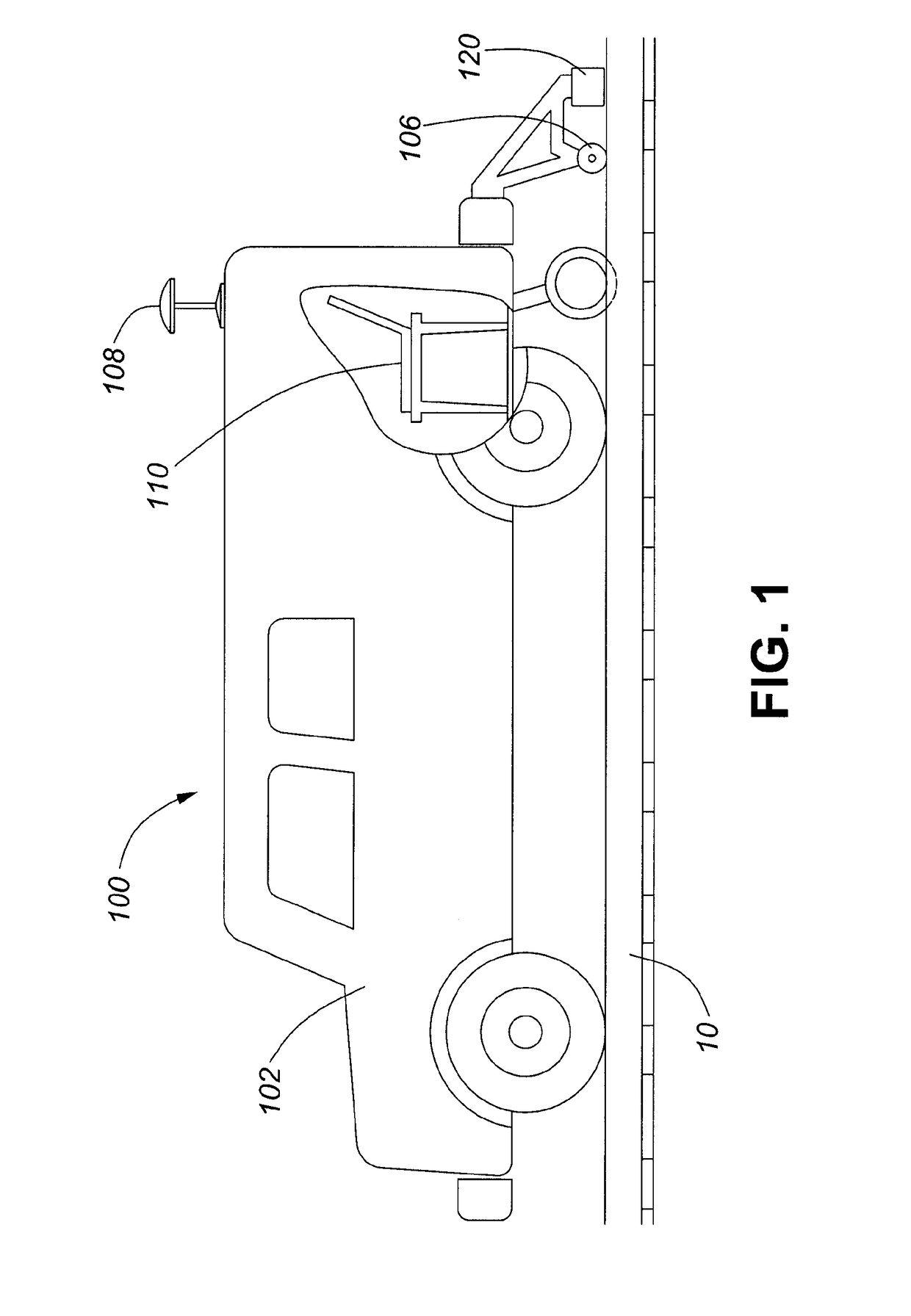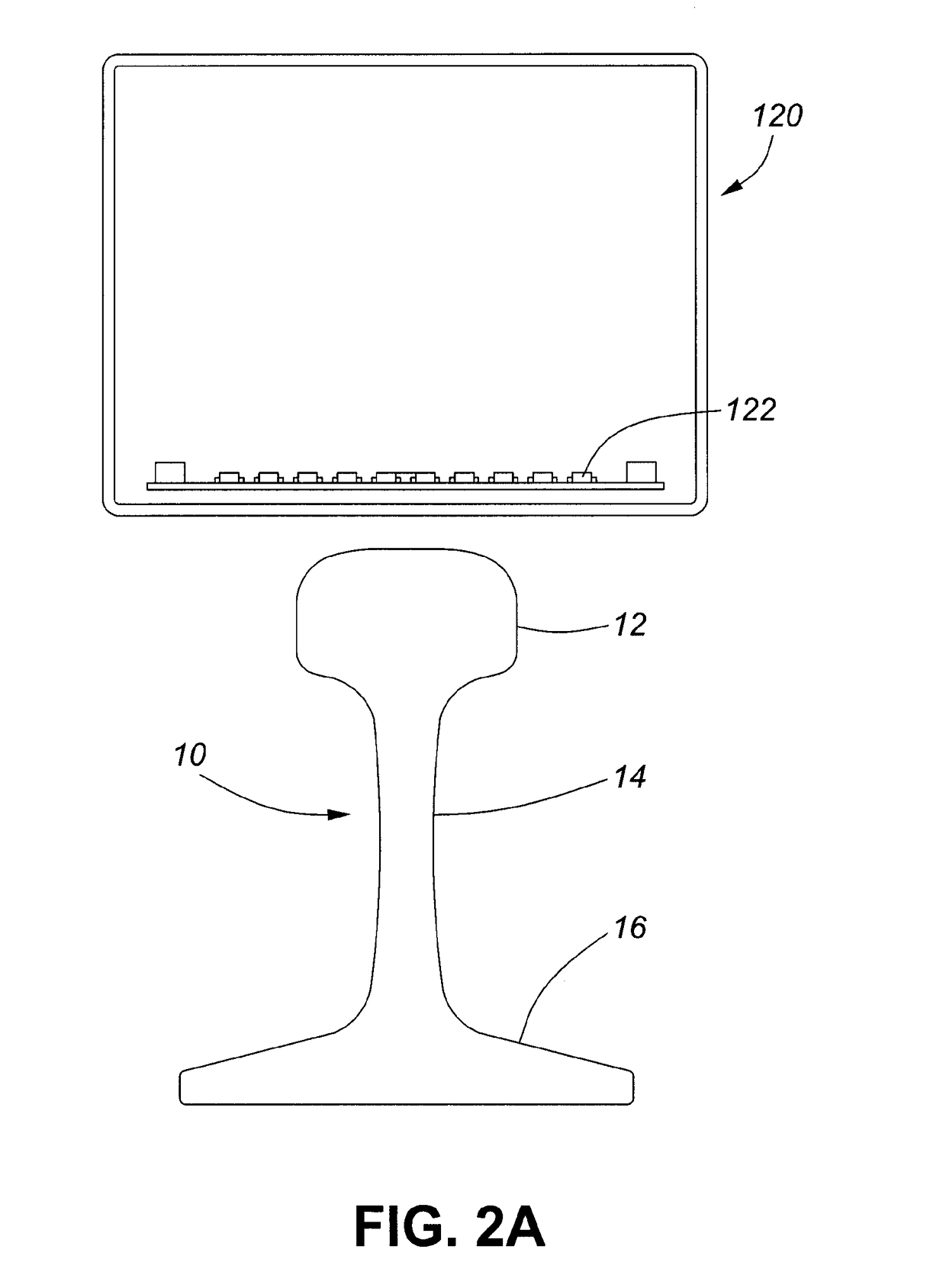Method and system for non-destructive rail inspection
a non-destructive and rail inspection technology, applied in the direction of railway signalling and safety, railway components, magnitude/direction of magnetic fields, etc., can solve the problems of rail tracks subject to wear and damage, extreme train derailment, wear and damage, etc., and achieve the effect of efficient identification of defects on the railway track
- Summary
- Abstract
- Description
- Claims
- Application Information
AI Technical Summary
Benefits of technology
Problems solved by technology
Method used
Image
Examples
Embodiment Construction
[0029]In the following description, similar features in the drawings have been given identical reference numerals where appropriate. Terms such as “top” and “bottom”, “first” and “second”, or “right” and “left” or an identification of a particular x, y or z-axis may be used to identify opposing ends or different configurations or sides of structures. Such terms are used for illustration purposes and are not intended to limit the present disclosure.
[0030]Referring to FIG. 1 is an embodiment of a system 100 for identifying and locating defects in a railway track, or a metal rail 10. The system includes an apparatus 120 with at least one magnetic sensor such as a magnetometer 122 (as shown in FIG. 2) which is moveable along a length of the rail for measuring the magnetic fields of the metal rail, and a processor, as illustrated by a computer 110. The computer 110 includes memory such as a non-transitory computer readable medium which stores instructions for implementing certain aspects...
PUM
| Property | Measurement | Unit |
|---|---|---|
| vertical distance | aaaaa | aaaaa |
| distance | aaaaa | aaaaa |
| distances | aaaaa | aaaaa |
Abstract
Description
Claims
Application Information
 Login to View More
Login to View More - R&D
- Intellectual Property
- Life Sciences
- Materials
- Tech Scout
- Unparalleled Data Quality
- Higher Quality Content
- 60% Fewer Hallucinations
Browse by: Latest US Patents, China's latest patents, Technical Efficacy Thesaurus, Application Domain, Technology Topic, Popular Technical Reports.
© 2025 PatSnap. All rights reserved.Legal|Privacy policy|Modern Slavery Act Transparency Statement|Sitemap|About US| Contact US: help@patsnap.com



